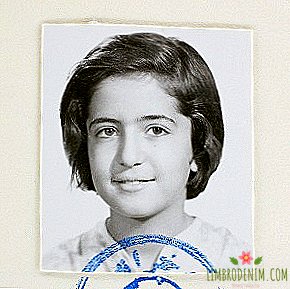Eye fell into the toilet: What should be children's books
Last week ombudsman Anna Kuznetsova presented a selection of children's literature that she considers “indecent” - for example, Igor Irtenyev’s poem “The Tale About the Eye” and Svetlana Lavrova’s fairy tale “Where the Cock Horse Rides” got into it. The next day, representatives of the book community - writers, literary critics, editors, educators, bibliographers - published an open letter to the ombudsman: they stated that the list resembles an anonymous selection of “16 masterpieces of modern children's literature” that even adults are afraid to show on the Internet. She absolutely can not judge the state of modern children's literature.
Books for children are still a mystery to those who are unfamiliar with them. If you do not have your own children, younger brothers and sisters or nephews, you do not work with the younger generation and have nothing to do with book publishing, most likely you have little contact with them and remember only what you yourself loved as a child. We decided to think about what the books of the future should be - and find out what books modern children like.

Choose your adventure
At the end of last year, literary critic Galina Yuzefovich wrote on Facebook how, in her opinion, the reading of modern children has changed - and how to help them fall in love with books. The previous generation — that is, the parents of today's children — did not read like today's children: this was one of the few leisure options available. “For a modern child living in a world with an endless set of entertainment and a very high pace of life, reading is only one of the possible entertainment, rather laborious and time consuming. This means that he has where to“ leak ”- which he will do with the slightest pressure at this point, and it will be very difficult to get him back to reading, "the critic notes.
The children's poet and writer Masha Rupasova agrees with this point of view. “In order to write a book that will interest a modern child, one must be aware of the sharpest competition for children's attention,” she notes. “Thirty years ago, competitors of children's fiction were stories about Lenin and playing a bouncer in the yard. Now children the most diverse worlds created by professionals from different countries. Cinema, cartoons, top-class books, video games! "
Perhaps this is why many publishers today are trying to experiment with the form of books. One of the most striking examples is the electronic American editions of the Harry Potter series with animated illustrations, videos and even small games. Gradually, books with augmented reality appear: these are ordinary publications, but with the help of a smartphone and applications, the reader can access games and other interactive elements.
Interactive "Harry Potter"
At the same time, it’s impossible to say that luxury electronic publications will soon become ubiquitous, first of all because for the time being they frighten parents. In 2016, a charitable organization BookTrust, together with Open University, interviewed fifteen hundred parents of British children under eight. The majority said that they are concerned that their children are using or can use e-books - only 8% said that this situation suits them completely. The most common concern was that children spend more time at the screen; 35% of parents worried that children would lose interest in paper publications because of electronic ones; 31% - that they will get access to the content that is not suitable for them by age, even more than a quarter - which seriously affects the ability of the child to concentrate. There is another factor: not all publishers can afford to regularly publish e-books with a rich design.
“Traditional” paper books can also be interactive and experiment with form and content. For example, in the eighties and nineties in the United States, the series “Choose Your Own Adventure” was very popular, that is, “Choose an adventure for yourself”: readers were offered several options for the character’s actions, and depending on the choice, the plot also changed - it was possible to become a hero For example, die. New forms and ways to interest the little reader, to make him an active participant in the process are still looking for today - including in Russia. "If you look at the format, then modern design is made by designers and illustrators who are not afraid to experiment, try new things. The interactivity of a book that impresses a child more than just illustrations plays a big role. For example, in Anatomy, one of the hits 2017, ”says Anastasia Troyan, producer of the“ Myth of Childhood ”.
With the idea that modern books can and should give the child much more, the video blogger, literary editor, author of the project on children's books "Monkey" Valery Martianova agrees: "Children love comics, wimmelbukhs (" find "types like" Where's Waldo? "), pop-up-books, just picture-books. You can do a lot of things with them: invent stories, discuss environmental issues, read roles for characters, ”she notes.“ The book cannot be self-sufficient nowadays. You can read, play intellectual games, watch cartoons and to go to exhibitions. That’s what’s relevant and modern now is complex development. I’m sorry that many parents think the old way that by putting a book into the hands of a child, you can silence him for an hour or two. "

Where the monsters live
If you look at the list of ten children's writers whose works are the largest in circulation in Russia, over the past ten years it has changed little. According to the data for 2016, most of the names from it could be seen several decades ago: Korney Chukovsky, Agnia Barto, Alexander Volkov, Samuil Marshak, Nikolai Nosov, Alexander Pushkin, Hans Christian Andersen and others. This situation has developed not only in Russia: for example, in 2015 the BBC compiled a list of the best children's books of all times - but the youngest among them was published in 1968. Even Joanne Rowling’s books did not make the list, not to mention the less well-known book series like “Dark Beginnings” by Philip Pullman.
At the same time, it’s impossible to say that book publishing doesn’t change at all, it’s also impossible - in contrast to “traditional” Russian publishing houses like “Children's Literature” and “Baby”, there are editors who take on bold topics and new authors: “Scooter”, “Pink Giraffe”, "MYTH. Childhood", "Clever", "KompasGid", "Polyandriya". "It seems to me that now there are as many good children's books as there have never been. Both translated and Russian,” says writer, translator and philologist Asya Petrova. “We have a boom in children's literature! A whole generation of young, talented, and bold authors has grown writing for children and teenagers. These are Natalya Evdokimova, Anna Ignatova, Daria Vilke, Anna Anisimova, Anastasia Orlova and many others. I am convinced that the question “What is not enough for children's books now?” is completely irrelevant. They just have enough adherence to traditions, and innovation, and freedom. "
What kind of book gets to the child depends primarily on an adult: a parent, relative or someone else who buys this book. It is at this stage that the “old” and the “new” usually clash: many parents deliberately choose what they are familiar with, because they are not oriented in a huge assortment or because they want to acquaint children with what they themselves once liked. . This in itself is not bad, but one cannot but take into account that “new” publications can be closer and clearer to children than books published several decades ago.
It is important that the book be written in modern language - in 2018 not every child will be able to understand the problems of the pioneers or present disc phones
Maria Zimina, one of the creators of the bookstore "Chudetstvo", believes that the buyers of children's books can be divided into three groups. The first is the most conservative: those who are unfamiliar with new books and are pre-set against them, and it is almost impossible to convince them. “When you try to offer such visitors not Barto and Chukovsky, but at least Zakhoder, Blagininu, Kharms, claiming that these are also Soviet authors and classics of children's literature, people don’t believe:“ But I don’t know such books, I don’t read classic? "" - notes Zimin. The second group is the largest: they are well acquainted with the well-known assortment and are looking for something new. "Yes, very often they are wary of new books, authors, but they can talk about the book, pick one that will solve the problem that is of concern to their young reader. Many of them need to explain how to relate to modern literature, one or another the book, how to read and understand it correctly, but they are very grateful to the listeners and gladly absorb information, ”says Maria. Finally, the third group of buyers is those who are well acquainted with the market of children's books and who are not afraid of the new, but, on the contrary, are happy with it.
According to Polina Vlastovskaya, the head of the Children's Art Illustrated Literature department of the Rosman publishing house, the modern book addresses difficult topics and is a dialogue with a child — it’s hard to imagine communication from above, from the position of an all-knowing adult. She notes that it is also important that the book was written in modern language and is understandable to little readers: "Agree, not every child in 2018 will be able to understand the problems of the pioneers or present disc phones."
“Only bad books become hopelessly obsolete,” Pink Rosy Giraffe thinks. “It's not that the characters act under circumstances unknown to the reader or do not have all the capabilities of our contemporaries (there is no mobile connection in Harry Potter either!). the book did not pass the test of time, then, most likely, it is simply not good. There are books that are difficult for current children to read if they are being taught to read. Let the children read what they understand. And complicate the task gradually. "
One of the book hits 2017 "Anatomy"
Like any cultural phenomenon, children's books reflect the realities of their time - and this can be not only “eternal” values, but also situations that have changed their attitudes. First of all, it concerns the issues of diversity and discrimination: the society begins to notice its many manifestations only now. According to a study of the University of Florida, conducted in 2011, the authors of which studied almost six thousand books published from 1900 to 2000, in 57% of the books published annually, the main male characters. Only 31% of books are devoted to female characters. The situation has not changed much so far: according to a 2017 Observer and Nielsen study, male characters become the main characters two times more often than female characters. This concerns not only gender diversity: for example, the majority of book characters in the US are still white.
Nevertheless, the changes begin here, for example, a children's book about inventors, published in Russia, no longer seems something unusual. The founder of the courses "Write like a Grrrl" Sasha Shadrina believes that writers, publishers and parents should make more efforts to change the situation. In her opinion, the main challenges are now facing fiction: it is very difficult to abandon the "working" techniques that the authors and publishers often do not analyze. For example, in the book there can be a heroine, free from stereotypes, but a “traditional” complete comic villain. “We are guided by the consideration that everyone wants to read first of all about himself. But the book of the future is an“ non-gender ”book that is not dismissed as a“ girlish. ”For example, the modern Swedish classic Maria Parr“ Waffle heart ”that we love copes with this task very well. This is a very faithful book, with live heroes arguing with gender stereotypes, and at the same time a very good literature for centuries, "says Sasha Shadrina.

Big Book Mice
Finally, one of the most important factors that in no case can not be discounted, speaking of children's books - the children's own tastes. In the case when books are increasingly perceived as entertainment, along with video games and TV shows, this seems to be the only way to make the book really interesting. Even if what children like is shocking or frustrating for parents.
Julia, Sasha's mother, who was almost three years old, worked in the publishing business before her child was born, so she always took seriously the choice of books. “Sasha was not half a year old, but her personal library consisted of dozens of editions. But the fact is that I was not at all orientated, for what age exactly which book is needed,” she says. “I thought I would start reading her“ Fairy Tale ” about the fisherman and the fish "of Pushkin or Mandelstam's" Sleepy Trams ", and the man is dumbfounded, the words hit by the music. But no. With a lot of great interest the books-cartons with windows were biting and tearing. The absolute hit is the Big Book of the Mouse." Cussens Lucy and the books of the series “Why? Why? Why?“ ". Julia believes that her favorite books can be stupid, in the opinion of an adult, and this is normal - in her case, this is the book "Forward! Forward!" Eastman, who loves Sasha.
The book "Where the monsters live" after the release caused the indignation of parents, while it was very popular among children, because it recognized for the child the right to strong feelings
"It seems to me that children lack first of all serious attitude towards them. The really important children's books - Robinson Crusoe, Gulliver and many others - were written for adults and later turned into children's literature," says Nik Dubrovskaya , Author of the series "Anthropology for Children" and other books for children and teenagers. In her opinion, a large mass of children's literature serves several purposes - to entertain so that children do not get bored and do not bother their parents - and at the same time conveys ideological attitudes: "Boys are taught domination, girls are subject to obedience. Everyone is taught to obey adults and again they are taught to entertain This is very sad, because being a child is difficult. Therefore, I am for socially responsible children's literature. "
Perhaps the future of children's literature is precisely this: to treat children, their desires and tastes seriously, but do not forget that the purpose of reading is primarily pleasure. Do not expect books to help cultivate "spirituality" and "good taste" - they can do that, but the child should want it. To begin with, children need to love a book - and learn how to make an independent choice. “The book“ Where the monsters live ”after the release caused the indignation of parents: the story was called strange, and the illustrations were frightening,” say the Pink Giraffe publishing house. “At the same time, the book was very popular with children because it recognized the right to strong feelings for feelings that adults do not approve of. And showed ways out of a conflict situation. To recognize the feelings of others is a new ethical reality. It is in her that our children, fortunately, grow. A modern book should take this into account. "





